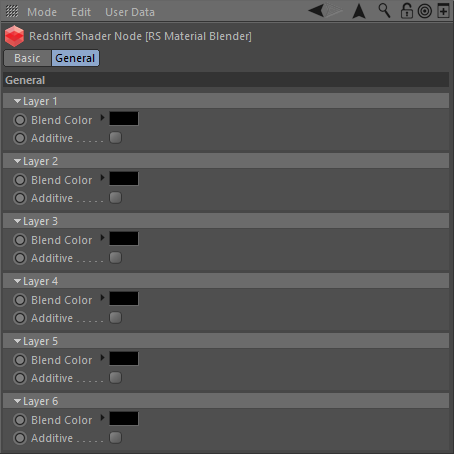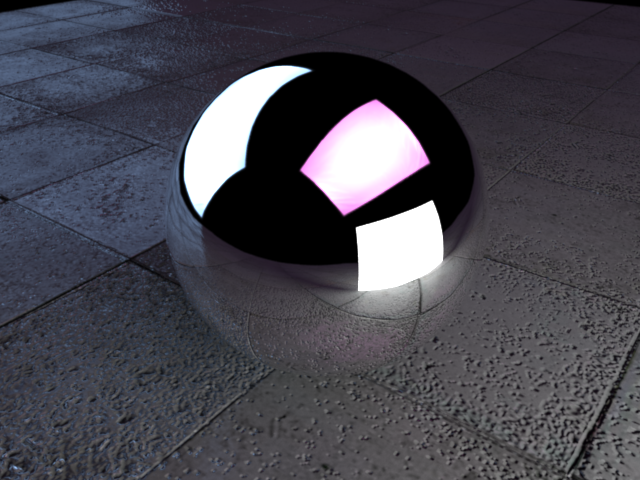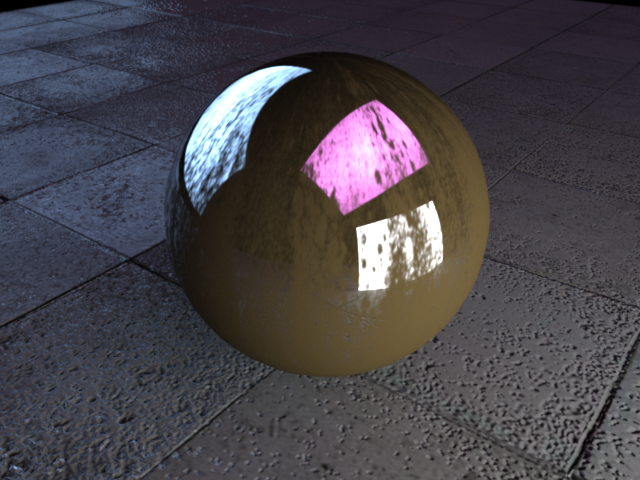Material Blender 材质混合
Introduction
引言
Sometimes a material uber shader is not enough for effects that ultimately require the overlaying of several materials, like dirt or extra reflection layers for example. To achieve this efficiently with Redshift, you should use the Material Blender shader.
有时一个材质优先的着色器对于最终需要叠加多种材质的效果来说是不够的,比如灰尘或者额外的反射层。要实现这个有效的红移,你应该使用材质混合着色器。
The Material Blender supports up to six 'coat' layers on top a base material shader. Since it is important to preserve energy for 'realistic' materials (meaning, a material cannot reflect more light than it receives), by default layers are not simply added together, they are instead mixed based on the color of each successive layer.
材料混合器支持多达六层涂层上一个基础材质着色器。因为为“真实的”材料保存能量很重要(意思是,一种材料不能反射比它接收到的更多的光线) ,默认层不是简单地叠加在一起,而是根据每个连续层的颜色混合在一起。
The default mixing rule is such that a layer blend color of 1.0, 1.0, 1.0 (white) results in the layer material color winning, effectively replacing the previous layers, whereas a layer blend color of 0.0, 0.0, 0.0 (black) results in the previous layers winning, with no contribution from the layer material. Layer blend colors in-between black and white result in a blend of the previous layers and the layer material.
默认的混合规则是这样的: 1.0,1.0,1.0(白色)的图层混合颜色获胜,有效地取代了以前的图层,而0.0,0.0,0.0(黑色)的图层混合颜色获胜,没有来自图层材料的贡献。图层混合颜色-之间的黑色和白色的结果混合以前的图层和图层材质。
Base Material
基础材料
Color
颜色
This input defines the base material shader color. Plug your base shader in here.
这个输入定义了基础材质着色器的颜色。
Layer 1-6
第1至6层
Material Color
材质颜色
This input defines the layer material shader color that will be tinted by the Blend Color. Plug your other shaders in here.
这个输入定义了层材质着色器颜色,它将被混合颜色着色。在这里插入其他着色器。
Blend Color
混合颜色
This is the color tint that is applied to the layer material shader. Note that these values should be between 0.0 and 1.0 and that anything outside of this will be clamped when not in 'additive' mode.
这是应用于图层材质着色器的颜色色调。请注意,这些值应该在0.0和1.0之间,除此之外的任何内容都将在非“添加”模式下加以钳制。
Additive
添加剂
This mode switches from layer mixing to layer adding. When enabled, the final material result will be each material layer tinted by its blend color and added to the base color.
这种模式从层混合转变为层添加。如果启用,最终的材质结果将是每一个材质层由其混合颜色着色,并添加到基本颜色。
Note this mode is not energy preserving and should be used with care.
注意,这种模式不能保存能量,应该小心使用。
Material Blender Example
原料搅拌器示例
Here is a simple scene, demonstrating the blending of two layers on top of a perfectly reflective base layer.
这里是一个简单的场景,演示了在一个完美的反射基层上混合两个图层。
The first image to the left shows just the base color of the sphere, which is an Architectural material shader that fully reflective. You can see the reflection of an HDR environment map in there, along with a white rectangular area light.
左边的第一张图片只显示了球体的基本颜色,这是一个完全反射的建筑材料着色器。你可以在这里看到 HDR 环境地图的反射,还有一个白色的矩形区域灯。
The second image now has a 'dirt' texture layer applied to it, in Layer 1. The layer color is supplied by an Architectural material shader, with just a brown diffuse lighting component. The blend amount is a texture map that contains a monochrome dirt-map. Since we are not in 'additive' mode, the dirt layer appears as a blended decal.
第二个图像现在有一个“污垢”纹理层应用到它,在第一层。图层颜色是由建筑材质着色器提供的,只有一个棕色漫射照明组件。混合量是一个纹理贴图,其中包含一个单色脏贴图。由于我们不是在“添加剂”模式,污垢层出现作为一个混合贴花。
The third image now demonstrates a decal texture map image, in Layer 2. Again, the layer color is supplied by an Architectural material shader, with its diffuse component driven by the decal image. The blend amount is driven by the alpha channel of the decal texture map.
第三张图现在显示了贴花纹理贴图图像,在第二层。同样,图层颜色由建筑材质着色器提供,其漫反射部分由贴花图像驱动。混合量由贴花纹理贴图的 alpha 通道驱动。





赶快留个言打破零评论!~